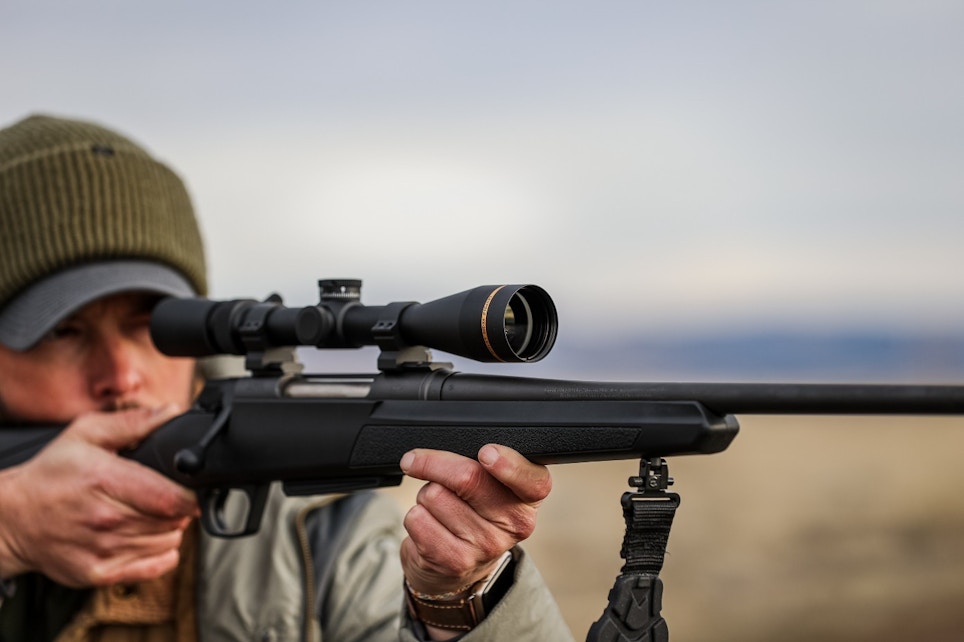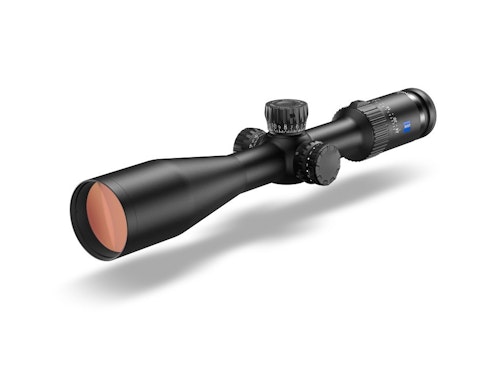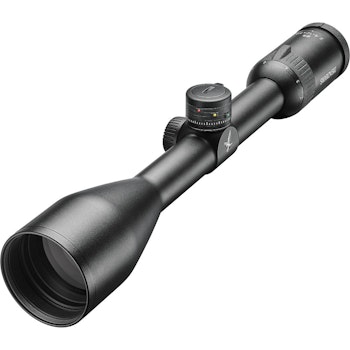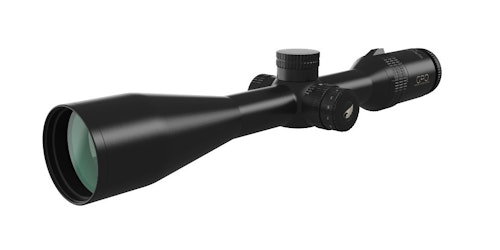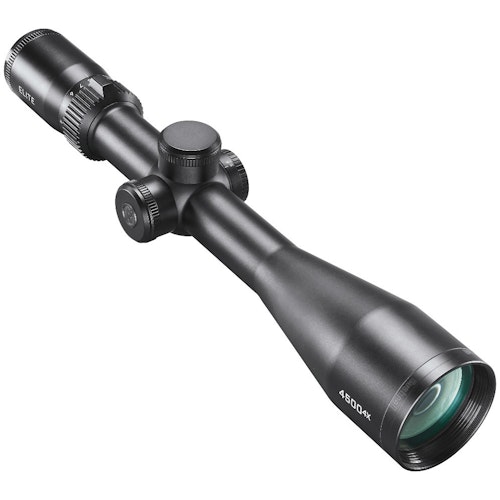As I struggled to get my crosshairs settled behind the shoulder of the big 10-point Oklahoma whitetail, I was beginning to feel like I was fighting a losing battle. Shooting time had finally arrived, but my scope’s lens was mostly fogged over, and the problem was getting worse the more exasperated I got.
Trying a different magnification only made things go from bad to worse, as the scope had limited eye relief, and I immediately lost the buck through the scope. By the time I found him again, I still couldn’t see him clearly enough to be sure where my crosshairs were centered. A few seconds later, I watched what was at the time my “buck of my lifetime” walk off the wheat field and into the thick timber along the edge.
If you are thinking I had a bad case of buck fever, you’re right. But I also had another major problem — a bargain-store riflescope that didn’t allow me to see everything as clearly as I needed to. The year was 1988, and I had recently splurged and spent the princely sum of $500 for a new deer rifle. But then I had committed the cardinal sin of many beginning deer hunters — spending $49 on an entry-level scope to go on top of that fine rifle.
Of Riflescopes & High-End Glass
Fact is, having a better riflescope would probably have ensured I put that buck’s head on my wall. However, it’s important to note that there’s really not a good definition for the term “high-end” where riflescopes are concerned. And that can make it difficult for some hunting retailers to determine which scopes to carry in their inventory.
Mike Jensen is owner and CEO of GPO-USA, the American branch of German Precision Optics. Jensen has been in the firearms business his whole life (his parents had a gun shop) and has held vice president positions at Marlin and Remington, as well as serving as national sales manager for Swarovski and president and CEO of Zeiss U.S. operations.
“Glass is such a tricky discussion, and ‘high-end’ is like saying, ‘I want a great car,’” Jensen said in an exclusive interview with Hunting Retailer. “‘High-end’ is a little bit of a nebulous term, and everybody’s eyes see a little different level of quality of ‘high-end.’ The more of an optics geek you are, the more ‘high-end’ really means you want no visual distortion, edge clarity, and very, very sharp image resolutions at the highest magnification you can get it at. Because that sharpness of the image is what creates a lot of that ‘high-end’ perception.”
In fact, according to Jensen, scope manufacturing is so much better nowadays compared to 15 or 20 years ago that the line between an average riflescope and a “high-end” unit is somewhat blurred. Still, the difference is obvious to those who compare scopes carefully and want the best their hard-earned dollars can afford.
“Spending the extra money for the better glass—the better resolution, the better light transmission—is always money well spent,” Jensen said. “What’s funny about optics: Once you start transitioning to that ‘high-end,’ it’s very, very hard to go back and buy a mid-tier product.”
Greg Palkowitsh, design engineer for Bushnell, has been designing and engineering riflescopes and other optics for nearly a decade. Paklowitsh said there are a number of factors that go into determining whether an optic performs well enough to meet the “high-end” standard.
“There’s a lot that goes into even a low-end riflescope,” he said. “What really kind of determines between the different optical qualities is the material of the glass, design tolerances and manufacturing tolerances, difference in coatings and the number of coatings, and the number of lens elements within a system.”
The difference in coatings and the number of lenses is an interesting discussion in itself—and one that many consumers, and even some retailers, don’t understand.
“Every system is a different optical subscription, but a ‘high-end’ riflescope might have 15 to 17 pieces of glass, whereas a budget one might have nine pieces,” Palkowitsh said. “Coating-wise, a coated optic means you only have one layer of coating on the outside surfaces of the lens that face the outside world. When you go to fully coated, then each lens has at least one set of coatings per glass-to-air surface. When you go to fully multi-coated, that means there is more than one coating per lens face. Most of the higher-end scopes might have 10-plus coatings per surface.”
The number of lenses, the coatings applied and a few other factors weigh heavily in how much light is transmitted from the target to the shooter’s eye. And that light transmission is one of the things that varies greatly among low-end and high-end scopes.
“For the higher-end scopes, you’re going to have higher light transmission — probably 92 upwards to about 94 percent,” he said. “A lot of your entry-level scopes are in that 78 to 80 percent range. Then the mid-tiers are usually upper 80s to low 90s. When you get to those upper levels, it’s hard for the human eye to determine one that’s 91 from one that’s, say, 93.”
For retailers, GPO-USA’s Jensen said the key to finding the right riflescope for customers, whether “high-end” optics or otherwise, is to find out how the customer intends to use the riflescope. And that requires some initiative on the salesperson’s part.
“Most retailers understand the direction of their market,” he said. “My number one advice to retailers is try to coach your sales people to ask a few additional questions on the scope side of it. What are you using it for? What’s your price range? What kind of quality standard are you looking for? Are there any technical features, like specific turrets, you’re looking for? Are you using it in low-light situations on a regular basis? Is it important to be able to use it in a very low-light situation?
“That last question can steer that salesman immediately to, ‘OK, I think a $500 riflescope is going to suffice for this guy,’ or, ‘It’s going to take $1,000 to really have this guy happy with his purchase.’”
Jensen believes that extra effort by sales people will lead to not only more riflescope sales, but to repeat sales later on — another critical goal of all retailers.
“One objective of a retailer is to build repeat customers,” he said. “The customer has to believe the guy behind the counter cares about him, and that’s what none of the chain stores can supply. The specialty retail shops have an opportunity to convince that customer that they really care and really want to help them.”
As for Bushnell’s Palkowitsh, he says that it’s very difficult for riflescope shoppers to really learn anything about the scopes they are considering while looking through them inside the store, since lighting conditions are far better than they would be in the field.
“The hard part about picking out optics is when you’re in a storefront looking across the room at 100 yards, at most, at a stuffed animal or whatever, the fluorescent lights do not represent natural light,” he said. “Checking a scope inside versus outside is very, very difficult. The best thing to do is see if they’ll let you take it outside and actually compare them outside. If retailers have a way to let customers take scopes outside, put them on a v-block side by side and look through two or three like-type scopes together, they would definitely be able to see the winner out of those scopes.”
High-End Options
Now, let’s take a brief look at a handful of high-end scopes that retailers might consider carrying in their inventory and that could help bolster their bottom line.
The Zeiss Conquest V4 3-12x56 is an outstanding riflescope that should impress even the biggest optics nerd that visits your shop. A combination of light weight and high performance, the scope features a 4x zoom ratio, a 30mm main tube and 90-percent light transmission from the target to the shooter’s eye. Lenses are coated with Zeiss’s proprietary LotuTec coating, which enables a clear, unhindered view in all weather conditions. MSRP is around $1,000.
Swarovski has been making high-quality riflescopes for decades, and that company’s Z5(i) 2.4-12x50 scope is another excellent option for the discerning hunter wanting the best riflescope he or she can afford. The scope’s high luminosity ensures hunters a clear look at their target at dawn and dusk and during other poor light conditions. The scope boasts 92% light transmission, and a third turret allows for parallax adjustments for long-range shots. MSRP is $1,277.
The Leupold VX-3i 4.5-14x40 Duplex riflescope offers high-end optics quality in a more budget-minded package. This incredibly tough, very lightweight scope is built around Leupold’s Elite Optical System and offers the light transmission, glare reduction and resolution that die-hard hunters demand for all-day performance. The CDS-ZL adjustment allows for 14.5 MOA of bullet drop, which equals 500 to 700 yards of travel for most rifles. The scope is also 100 percent waterproof and fog proof, and carries the company’s lifetime guarantee. MSRP is only $499.
GPO-USA’s Spectra 4-16x50i is designed for hunters who want peak performance in the fields and woods without breaking the bank. Featuring a 30mm main tube, proprietary GPObright high-transmission lens coating technology, PASSIONdrop hydrophobic exterior lens coatings and a double HD glass objective lens, the Spectra provides hunters with enhanced clarity, exceptional brightness and true color from dawn to dusk. Plus, the scope’s iCONTROL illumination system can be adjusted between barely visible for low-light conditions or extremely bright for daylight usage. MSRP is $749.99.
Bushnell might not always be viewed as being in the high-end realm, but those who believe otherwise likely haven’t seen the company’s scopes lately. Just introduced this summer, the company’s Elite 4500 4X 4-16x50 is designed and manufactured to play with the big boys, with Ultra Wide Band Coatings to boost image clarity while cutting out glare. “Optics on these scopes are tremendous for the price,” said Bushnell’s Palkowitsh. “I’d put them up, optically, against scopes at twice the price.” MSRP for the Elite 4500 4X 4-16x50 is $299.
